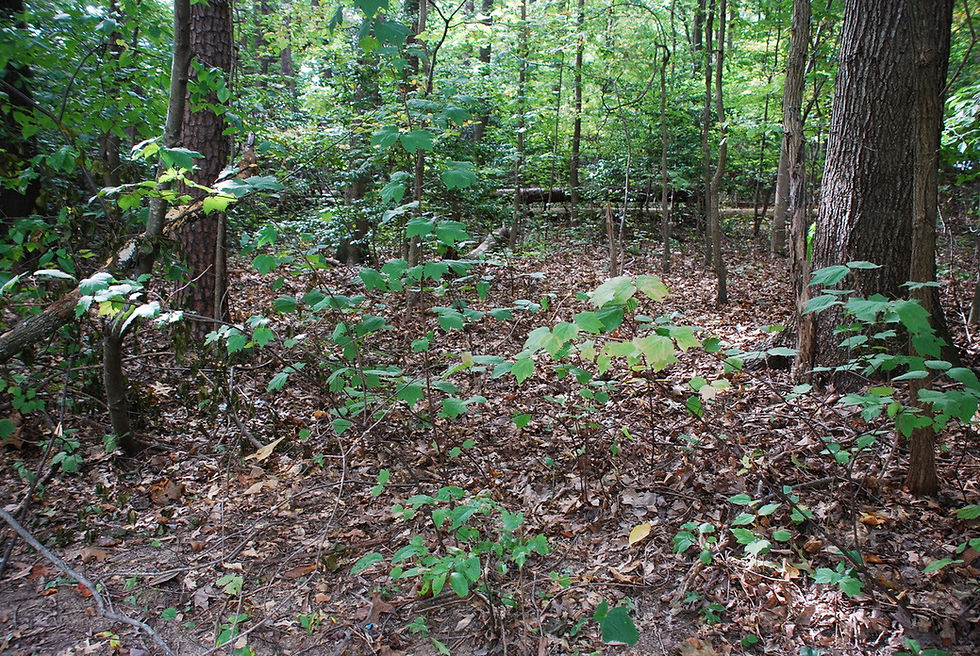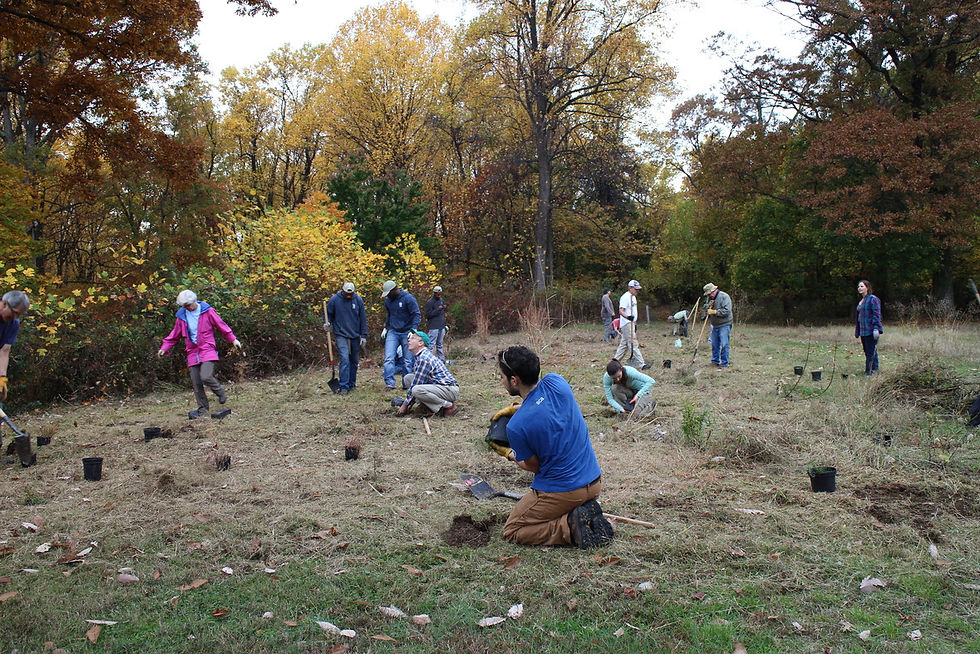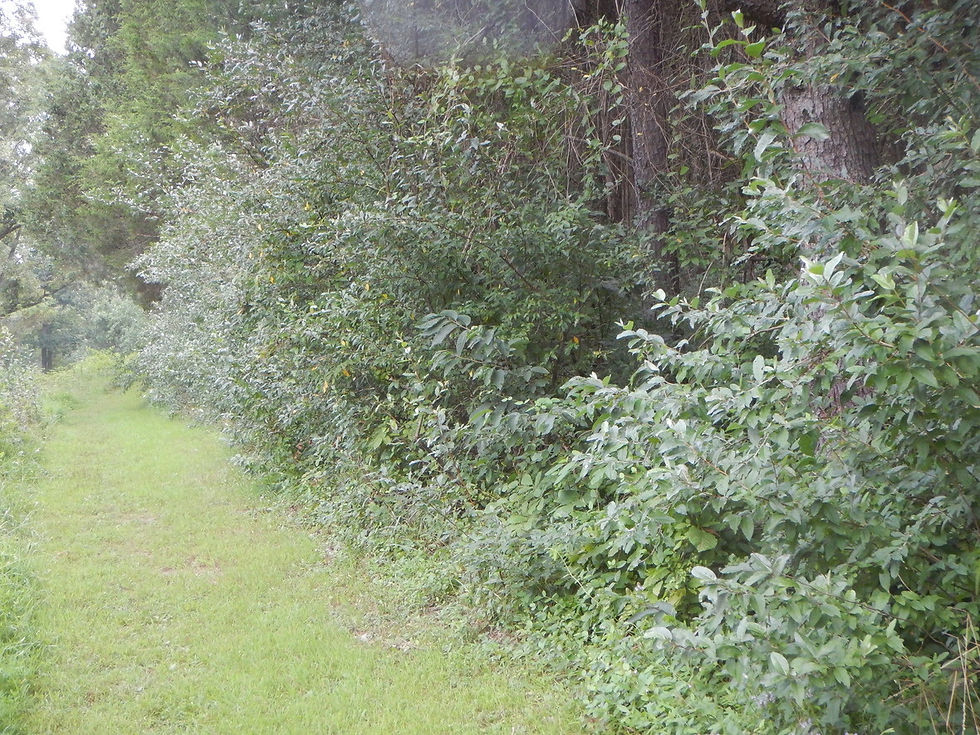Our Local Forest Communities Need More Native Trees
- Lisa Bright
- Sep 4, 2019
- 2 min read

This particular standing of Maple-Leaf Viburnum is now decimated by Bradford Pears.

Some years ago, we worked with NPS in DC to create edge-of-the woodland meadows.

Exotic Olive trees. Sadly, this is a common feature of our forest edges.
There is little doubt that our local wild areas have been in decline. This, in spite of increased awareness and efforts of many conscientious and hard-working individuals, organizations, and local park systems to turn around this negative trend. Forest communities, like our region's temperate deciduous forests, are living organisms and always changing. The forest ecology is neither random nor simple. Every part of a community, whether organic or non-organic, is influencing one another. Together, they've built a system of ecological relationships, where complex layers of life work together harmoniously.
Well, until the human activities have burdened them to a breaking point. The delicate forest ecosystem is unraveling right now. We're losing the forest edges, both the physical and psychological edges that would buffer and protect the ecological function of our forests.
You've all noticed how exotic invasive plants choke our forests. How once robust oaks and hickories are losing ground. Habitat degradation and the overpopulation of deer are the main culprit. Even the most prolific forest understory small trees and shrubs like Flowering Dogwood, Arrowwood and Maple-leaf Viburnums and all those Dwarf Huckleberry and Upland Blueberry are fast disappearing in some parts of forests. The Eastern U.S.forests are primarily hardwood forests unlike the Midwestern prairie. Our herbaceous plants are edge-of-the woodland species. They don't compete with the trees. Many of our grass species and flowering herbaceous plants do well in the tree shades.
However, they don't do well with the onslaught of various exotic Olive trees (you can see in above photo how they've created a thick wall along the edge of forest), Bradford Pears, and now ubiquitous Japanese Stiltgrass and other various invasive plants.
It doesn't help the situation when the policies of government agencies who are supposed to protect the ecological health of forests are still in woefully outdated modes: they are geared to protect human safety (against tall plants and some tree branches and insects?) and to promote recreational activities such as mountain biking whose riders hardly notice the forests anyway). It seems to me that we are well beyond this kind of concerns. It is a high time we save our forests for the sake of forests. Living trees are the best and the only effective mitigator against the relentless rise of carbon dioxide.
At our Wild Plant Nursery, we've dramatically increased the propagation of number of native shrubs and small trees in the hope that more parks would plant them. It is not too late to plant more trees. We can't just give up because the problems appear too big for an individual to handle. We are always an individual but also we are not. Our Sangha is planning to to install many tree and shrub seedlings this fall and will continue propagate more native trees. Let's reforest. And safeguard what we have.


























It's so true! Seeing Bradford Pears and exotic olives taking over is disheartening. Those woodland edge meadows sound like a fantastic initiative – more of that is definitely needed. AI Text to Music
Geometry Dash Lite allows players to practice levels repeatedly using the practice mode, placing checkpoints strategically to learn difficult sections without starting over, making progress gradual and rewarding.